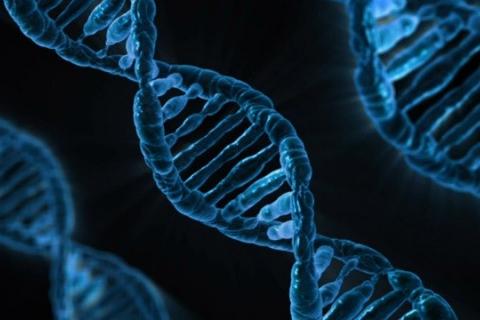
~ 3 minute read
Last July, a research team from The Hospital for Sick Children (SickKids), led by Dr. Ryan Yuen, announced it had discovered “wrinkles” in DNA that could provide a genetic cause for autism. Researchers believe this could represent a novel mechanism underlying the contribution to autism and other neurodevelopmental disorders. In October, Autism Ontario invited Dr. Yuen and his colleagues, Dr. Stephen Scherer, the study’s co-author and Director of The Centre for Applied Genomics (TCAG) at SickKids, Dr. Evdokia Anagnostou MD, senior clinician scientist at Holland Bloorview Kids Rehabilitation Hospital, and Ny Hoang, Genetic Counsellor in the Autism Research Unit at SickKids, to participate in a webinar to discuss the findings.
"This is one of the most exciting advances in autism research in the last 15 years"
"This is one of the most exciting advances in autism research in the last 15 years," said Dr. Scherer. “And that’s captured by the fact that Nature journal published us...” Dr. Scherer called it a “huge achievement” for everyone involved, for both researchers and the families who participated in the research. Being able to identify specific new forms of genetic contributors to autism will better enable earlier identification, he said. That will provide “entry points” added Dr. Scherer, for the development of novel therapeutics for those who choose to use them.
“Autism is considered a multifactorial condition,” explained Ms. Hoang. Likening autism to a cup filled with a number of factors, including both strong and weak genetic contributors, as well as environmental factors, she says the genetic factors are the most important. “In order to develop autism, you have to have enough susceptibility factors to fill that cup.”
“From studying thousands of families with children on the spectrum, we know that the genetic contribution to autism is highly variable,” she said. Examples of genetic variations in autism include gene deletions, duplications and spelling differences.
The tandem repeats, said Ms. Hoang—the “wrinkles” in DNA at the heart of the discovery—are sections of genetic instructions that are repeated and expanded. The discovery of tandem repeats is not new, as they are the underlying cause of several genetic conditions including Fragile X syndrome, myotonic dystrophy, Huntington’s disease, and many others. What is novel is the discovery of these tandem repeats in individuals with ASD, and the unique features of these repeats (i.e. different repeat sizes impacting many different genes).
“Those with long repeats affecting specific genes are likely to be the ones involved in autism,” said Dr. Yuen. “This breakthrough was only possible because of the availability of whole genome sequences.” To look for long repeats, he said, they took a statistical outlier approach. “If you look for genes with this specific repeat, it opens new opportunities in precision diagnostics, as well as pinpointing new targets for therapeutic testing.”
A discovery of this nature brings several benefits for families, said Dr. Anagnostou. First, she said, it can provide an “explanatory power,” where it removes some of the mystery associated with their child’s autism. Second, much earlier interventions can be developed and implemented, and third, she said, these interventions might be tailored to the type of autism that person has.
The genetic findings shouldn’t change the way a person with autism sees themselves
One of the big questions coming out of the discovery was the ability to predict the severity of autism. Dr. Yuen says that while it’s definitely worth looking at, they need a larger sample size than they currently have. “I don’t think we have a large enough number of genomes associated with the clinical outcomes,” he said. “I think it’s optimistic, so definitely it has the potential, but the limitation is the number.”
The genetic findings shouldn’t change the way a person with autism sees themselves, says Dr. Anagnostou. The findings don’t challenge the identity or traits of autism, she said, adding that these have been preserved by nature for many years and serve a purpose. “There’s no reason to use a genetic finding to change the way you think about yourself. If you’re interested in all the facts about genetic variation, that’s interesting information that may explain some of the differences you already see in yourself.”
"We’re just scratching the surface,” said Dr. Scherer, noting that this was the most complex genetic variation they’ve so far studied. “I’m quite sure—this is my prediction—we’re going to see this type of genetic wrinkle in other genes—not just the ones we talked about today in Ryan’s paper, but possibly in every different genetic disorder that’s known. People haven’t looked yet. This is the first paper. Other studies are going to learn from this one. We’re going to continue to learn.”
DISCLAIMER: This document reflects the views of the author. It is Autism Ontario’s intent to inform and educate. Every situation is unique and while we hope this information is useful, it should be used in the context of broader considerations for each person. Please contact Autism Ontario at info@autismontario.com or 416-246-9592 for permission to reproduce this material for any purpose other than personal use. © 2021 Autism Ontario 416-246-9592 www.autismontario.com
